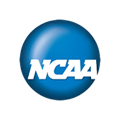| |
The rules committee is concerned about unnecessary and violent collisions with the catcher at home plate, and with infielders at all bases. The intent of this rule is to encourage base runners and defensive players to avoid such collisions whenever possible.
When there is a collision between a runner and a fielder who clearly is in possession of the ball, the umpire shall judge
If the defensive player blocks the base (plate) or base line with clear possession of the ball, the runner may make contact, slide into or make contact with a fielder as long as the runner is making a legitimate attempt to reach the base (plate). Contact above the waist that was initiated by the base runner shall not be judged as an attempt to reach the base or plate.
- The runner must make an actual attempt to reach the base (plate).
Penalty: If the runner attempts to dislodge the ball or initiates an avoidable collision, the runner shall be declared out, even if the fielder loses possession of the ball. The ball is dead and all other base runners shall return to the last base touched at the time of the collision.
- The runner may not attempt to dislodge the ball from the fielder. Contact above the waist shall be judged by the umpire as an attempt by the runner to dislodge the ball.
Penalty: If the contact is flagrant or malicious before the runner touches the plate, the runner shall be declared out and also ejected from the contest. The ball is immediately dead and all other base runners shall return to the last base touched at the time of the collision.
- The runner must attempt to avoid a collision if he can reach the base without colliding.
Penalty: If the contact is flagrant or malicious after the runner touches the base (plate), the runner is safe, but is ejected from the contest. The ball is immediately dead and all other base runners shall return to the last base touched at the time of the interference. If this occurs at any base other than home, the offending team may replace the runner.
If the contact occurs after a preceding runner touches home plate, the preceding runner is safe. The ball is immediately dead and all other base runners shall return to the last base touched at the time of the contact.
- If the runner's path to the base is blocked and (1), (2) and (3) are fulfilled, it is considered unavoidable contact (see Rule 2-54, Obstruction).
|

